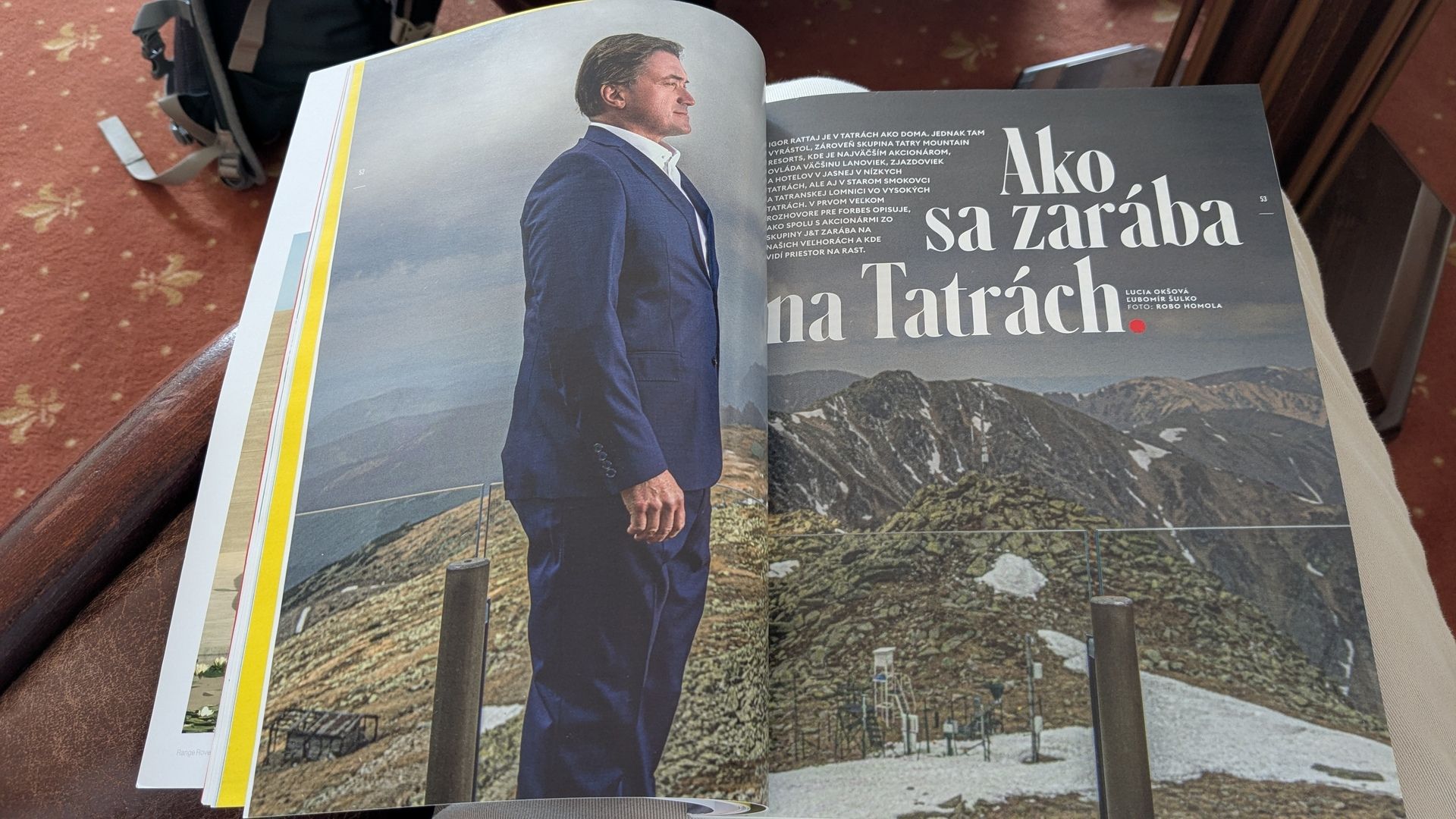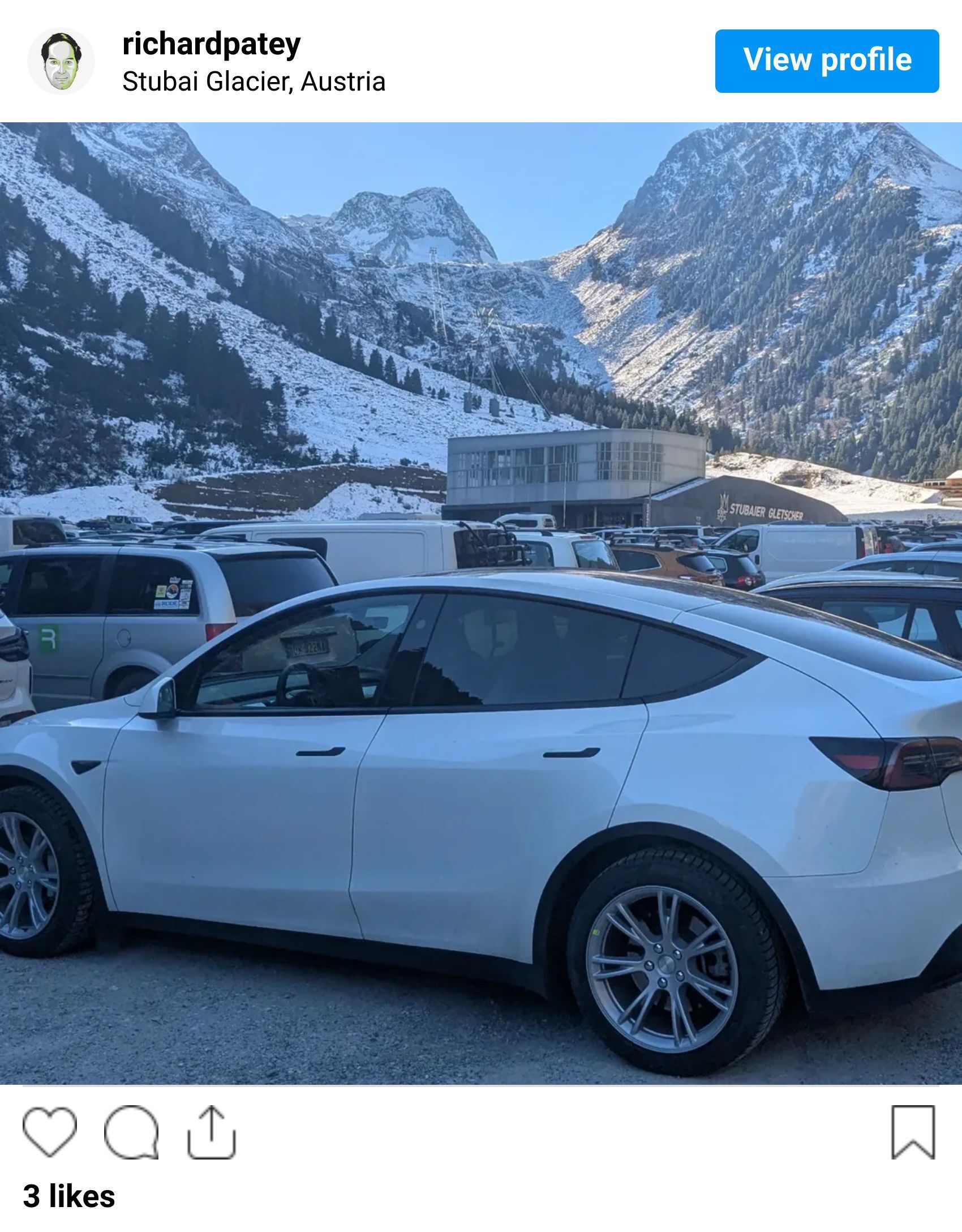- Tatras Trade Report
- Posts
- 🏔️ Slovakia’s Mountain Tycoon
🏔️ Slovakia’s Mountain Tycoon
Slovakia is shifting from “budget ski” to Alpine contender. The Forbes deep-dive explains why.
Hey there from Poprad — at the foot of the High Tatras, where mornings are already freezing and the snowline is sliding lower by the day. I’ve switched back to winter tyres and I’m firmly in “season mode” with Jasná opening at the end of the month.
On my recent trip to the UK, I had the winter tyres fitted at Tesla in Norwich and picked up a new pair of Nordica ski boots from Ski Exchange in Cambridge — a nice return to my East of England roots — before driving back through the Arlberg and up to the Stubai Glacier:
Back in May, I wrote about why UK and EU ski brands should be paying far closer attention to Slovakia — particularly the quiet but accelerating transformation of the High Tatras.
Forbes Slovakia may have just published the most detailed confirmation yet.
Their July cover feature — a 10-page deep dive on Igor Rattaj, chairman of Tatry Mountain Resorts (TMR) — reads like a masterclass in how Central European mountain destinations are preparing for the next decade of competition.
And if you’re in the ski trade — whether selling equipment, building partnerships, or scouting new markets — it’s essential reading.

Here’s what matters.
TMR Is Quietly Becoming a Central European Super-Operator
The Forbes article makes one thing absolutely clear:
Slovakia is no longer a “budget ski” outlier.
It’s becoming a vertically integrated mountain tourism business — with TMR at the centre.
Rattaj openly states that the 2023/24 season will be one of their highest-margin years on record, with EBITDA climbing fast after the post-pandemic slump. And the new strategic direction is simple:
push higher yield per visitor
grow international traffic
unify pricing with Alpine norms
expand the Gopass ecosystem across borders
This is not a company thinking small.
Three themes appear again and again in the interview.
Rattaj is blunt: skiing everywhere is more expensive, and Slovakia is aligning with the broader Alpine market.
Their goal is not low-cost volume.
It’s higher-spend, year-round guests.
2. International diversification is deliberate
TMR is now operating across:
Slovakia
Czech Republic
Poland
Austria
Not all expansions worked — Forbes grills Rattaj hard on failures in Poland and bureaucratic misery in Špindlerův Mlýn — but the ambition stands.
For UK brands, this matters:
Slovakia isn’t “one market.” It’s part of a Central European ski corridor.
3. Gopass is the engine
The article frames Gopass as TMR’s biggest competitive advantage.
It powers:
loyalty
pricing
segmentation
on-mountain spend
hotel funnels
cross-resort data sharing
In the ski industry, whoever owns the digital relationship owns the margin.
TMR understands this better than most Alpine resorts.
I already have my season pass with Gopass prepaid.
Slovakia’s Weakness: Regulation and Conservation Battles
The most striking part of the Forbes interview is Rattaj’s frustration with planning restrictions.
He claims:
Slovak national park rules are tighter than Austria
key resort expansions are blocked
environmental activism slows even basic upgrades
many investment timelines are “measured in decades”
It’s a tension UK ski operators should watch closely.
Slovakia wants to grow — but governance often slows execution.
Yet TMR’s answer is to look outward: Poland, Czechia, Austria, and even Saudi Arabia (yes, they’re in talks).
This outward push suggests they’re hedging the regulatory limits at home.
Labour Shortages Are Reshaping the Visitor Experience
One section of the Forbes piece hits a nerve:
Slovakia simply doesn’t have enough skilled workers in the mountains.
TMR is hiring across Europe and even Asia to fill roles once staffed locally.
For UK readers, this mirrors the post-Brexit staffing challenges in Scottish and French resorts.
Expect:
more multilingual on-site staff
rising wage costs
tighter service models
more automation (Gopass, kiosks, mobile check-in)
The Tatras are modernising out of necessity.
Why This Matters for the UK Ski Trade
Here’s the real takeaway for the UK market:
Slovakia is entering its “Austria-in-the-90s” phase — moving from regional underdog to modern, investable ski economy.
What TMR is building looks less like a local operator and more like a multi-resort Alpine conglomerate.
For UK brands, operators, and distributors, this means:
bigger partnership opportunities
a rising middle-class Central European customer base
a serious year-round mountain economy
new premium positioning in the Tatras
a digital ecosystem (Gopass) ready for integrations
If you read only one line from the Forbes piece, make it this:
“Tatras still have space to grow — and we are only at the beginning.”
That’s it for now, catch you in the next issue.
Richard (formerly of Snowbistro.com).
Follow me on Instagram at @richardpatey on X at @SkiSlovakia,
